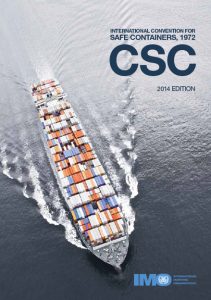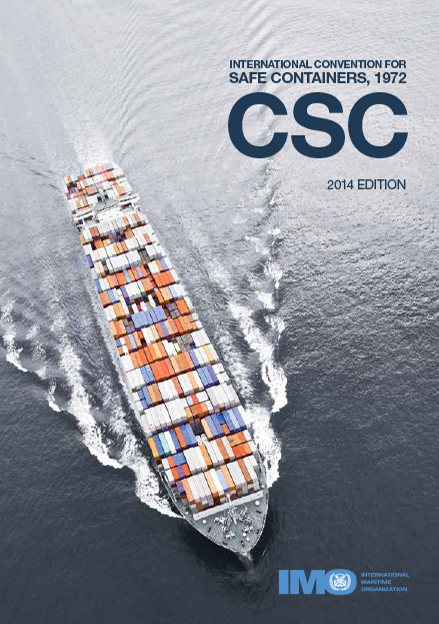
Ensuring Safety and Standardization in Global Container Transport
Introduction: Why Container Safety Matters
Every year, over 226 million containers are transported across the globe, carrying everything from food and clothes to electronics and chemicals. But how do we ensure these containers don’t collapse, contaminate, or cause environmental hazards? The answer lies in the International Convention for Safe Containers (CSC)—a global agreement that standardizes and regulates container safety.
This article explores the CSC’s role in international trade, from its origins to how it affects shipping companies, port operators, students of maritime law, and global logistics professionals. Whether you’re new to the shipping world or a seasoned expert, this guide will provide clarity and valuable insights.
What Is the CSC Convention?
A Simple Definition for Beginners
The International Convention for Safe Containers (CSC) is a United Nations treaty established to ensure that containers used in international transport meet standardized safety and inspection regulations.
-
Adopted: December 2, 1972 in Geneva
-
Entered into force: September 6, 1977
-
Overseen by: International Maritime Organization (IMO) in collaboration with the United Nations Economic Commission for Europe (UNECE)
The CSC aims to prevent accidents, ensure uniformity, and promote international trade efficiency.
Background: Why Was the CSC Established?
In the 1960s and early ’70s, the rapid growth of containerized shipping led to significant safety concerns. Containers were built to different standards, often resulting in:
-
Structural failures during transport or lifting
-
Cargo loss and accidents at sea or in ports
-
Inconsistent maintenance and labeling practices
To solve these issues, the CSC Convention was developed to ensure all containers used in international transport meet minimum structural integrity, maintenance, and inspection standards.
Core Objectives of the CSC
The CSC sets out two main goals:
-
Maintain high safety standards in container handling, stacking, and transport.
-
Facilitate international container traffic by applying uniform safety rules globally.
These objectives are achieved through technical regulations, certifications, and regular inspections.
CSC Certification and Inspection: How It Works
The CSC Plate: Your Container’s Passport
Every compliant container must have a CSC Safety Approval Plate permanently affixed. This metal plate contains key information:
-
Country of approval
-
Date of manufacture
-
Container ID number
-
Maximum gross weight
-
Racking test load value
-
Stacking test load value
This plate is a container’s proof of certification, allowing it to move freely across international borders.
Container Inspection and Maintenance Requirements
Containers must undergo periodic inspections:
-
Initial Inspection before approval (done by the manufacturer)
-
Periodic Examination Scheme (PES) every 30 months
-
Or Approved Continuous Examination Programme (ACEP)—a system used by many shipping lines to continuously monitor container safety
Who Needs to Comply with CSC?
The CSC applies to all containers used in international transport, especially those involved in intermodal shipping. This includes:
-
Shipping companies
-
Container manufacturers
-
Freight forwarders and logistics firms
-
Port authorities
-
Inspectors and surveyors
Failure to comply can result in containers being rejected at ports, fined, or quarantined, causing delays and financial loss.
Practical Applications & Case Studies
Real-World Examples
-
Port Inspections: Major ports like Rotterdam and Singapore frequently check CSC plates. Containers without valid plates can’t enter the terminal.
-
Disaster Prevention: In 2018, a container collapse onboard a feeder vessel revealed that several units had expired CSC certifications—raising alarms about poor compliance.
-
Supply Chain Disruption: An improperly inspected container caused a fire onboard a container ship in 2021, highlighting the importance of structural safety.
CSC in Intermodal Transport
CSC-compliant containers can seamlessly transfer between ships, trains, and trucks, simplifying logistics and reducing costs.
Latest Trends and Developments
Digitalization of Container Tracking
-
Smart CSC plates with QR codes and RFID are being piloted to improve tracking and real-time inspection updates.
-
Blockchain is being explored to manage CSC certifications securely across global supply chains.
Sustainability and CSC
As green logistics grows, the CSC is being integrated into broader safety-environmental compliance strategies. Containers are increasingly built with recyclable materials and subjected to lifecycle tracking.
Common Challenges in CSC Compliance
Despite its importance, CSC compliance faces hurdles:
-
Lack of awareness among smaller operators
-
Counterfeit CSC plates in circulation
-
Inconsistent enforcement across different regions
-
Aging container fleets not maintained regularly
To overcome these, international collaboration and education are key.
FAQs: People Also Ask
What is a CSC plate on a container?
A CSC plate is a metal tag on a shipping container showing it meets international safety standards as per the CSC Convention.
How often should a container be inspected under CSC?
Containers must be examined every 30 months under the Periodic Examination Scheme or monitored continuously under an ACEP.
Who regulates the CSC Convention?
The International Maritime Organization (IMO) is responsible for administering and updating the CSC Convention.
Are all containers covered by the CSC?
No. Containers used exclusively for domestic transport, military purposes, or air transport may be exempt.
Conclusion: Why CSC Still Matters Today
The International Convention for Safe Containers remains a cornerstone of global shipping. By enforcing strict safety and certification standards, it helps:
-
Protect workers and cargo
-
Maintain supply chain efficiency
-
Enable seamless global trade
-
Support sustainable transport systems
As logistics becomes more complex and digitalized, CSC compliance is not just a legal duty—it’s a competitive advantage.
🔗 Explore further:
-
Visit the IMO’s official CSC page
-
Review UNECE Container Standards
-
Check out our related article: STCW Certification Requirements for Seafarers (example link)
References / Further Reading
-
International Maritime Organization (IMO). International Convention for Safe Containers.
-
United Nations Economic Commission for Europe (UNECE). Transport Division Documents.
-
Lloyd’s Register. (2023). Container Safety Inspections: Guidelines & Trends.
-
World Shipping Council. (2024). Container Handling Safety Reports.

